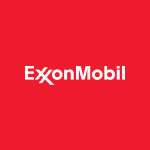ExxonMobil Q3 2020 Earnings Report
Key Takeaways
ExxonMobil reported a third quarter 2020 loss of $680 million, or $0.15 per share assuming dilution. Third quarter capital and exploration expenditures were $4.1 billion. Oil-equivalent production was 3.7 million barrels per day, up 1 percent from the second quarter of 2020.
Third quarter results improved by $400 million from the second quarter, primarily driven by early stages of demand recovery; excluding identified items, results improved by $2.2 billion
On track to exceed reduction targets for 2020 capital and cash expenses; further reductions anticipated in 2021
Continued Guyana progress with third major deepwater development approval and two new discoveries
Preliminary 2021 capital program expected to be in the range of $16 billion to $19 billion, a reduction from the 2020 target of $23 billion announced in April.
Revenue by Geographic Location
Forward Guidance
ExxonMobil expects to identify further structural efficiencies as it continues previously announced country-by-country reviews and the company expects to complete an assessment in the fourth quarter.
Positive Outlook
- Improved market conditions enabled full recovery of production impacted by economic curtailments.
- Supply chain optimization, higher product sales due to increased demand, and higher marketing margins more than offset lower industry fuels margins driven by market oversupply and high product inventory levels.
- Third quarter saw the best reliability and process performance in the last 10 years, while average refinery utilization increased about 6 percent from the second quarter on demand recovery.
- Chemical sales volumes were higher than second quarter, benefiting from resilient packaging demand and recovering automotive and construction markets.
- Compared to 2019, drilling and completion costs decreased more than 20 percent, while drilling rates (lateral feet per day) and fracturing rates (stages per day) both increased more than 30 percent.
Challenges Ahead
- Natural gas realizations declined, primarily due to a lag in crude-linked LNG contract pricing.
Revenue & Expenses
Visualization of income flow from segment revenue to net income
Historical Earnings Impact
Analyze how earnings announcements historically affect stock price performance

